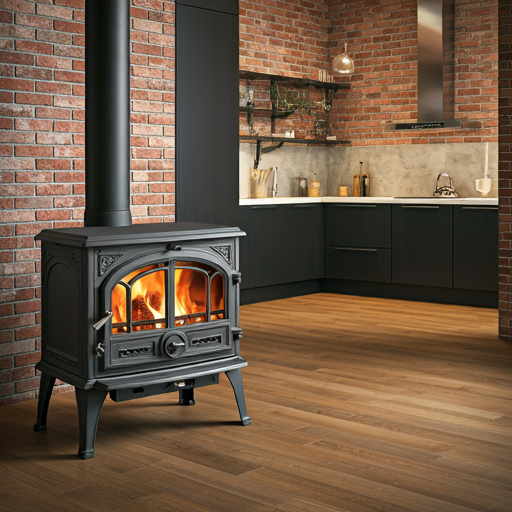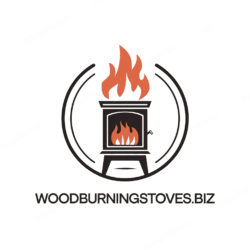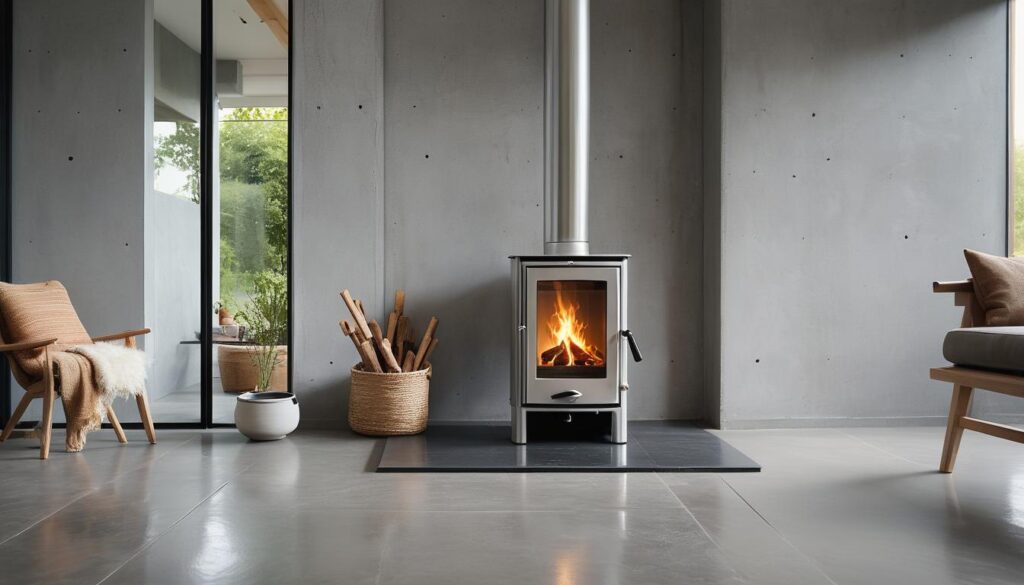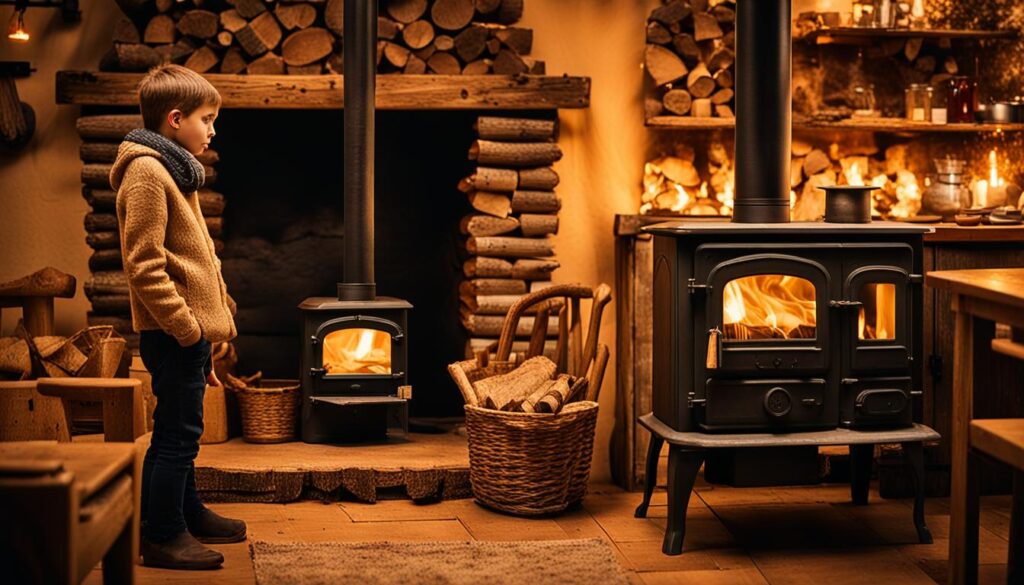- Warmth, Ambiance, and Sustainability: Weighing the Advantages and Disadvantages of Cast Iron Wood-Burning Stoves
- Understanding the Allure of Cast Iron Wood-Burning Stoves
- Sustainable Heating Source: A Closer Look
- Energy Efficiency and Cost Savings: Maximizing Your Investment
- Aesthetic Appeal and Ambiance: Enhancing Your Living Space
- Off-Grid Capability: Embracing Energy Independence
- Environmental Concerns and Regulations: Balancing Sustainability
- Maintenance Demands: Time and Effort
- Safety Concerns: Prioritizing Well-being
- Initial Investment: Weighing the Costs
- Maximizing Your Cast Iron Wood-Burning Stove Experience: Expert Tips and Considerations
- Conclusion
Warmth, Ambiance, and Sustainability: Weighing the Advantages and Disadvantages of Cast Iron Wood-Burning Stoves

As the world shifts towards more eco-friendly and cost-effective heating solutions, Cast Iron Wood-Burning Stoves have regained popularity for their unique blend of traditional charm, efficiency, and environmental benefits. But, like any heating option, they come with their set of pros and cons. In this comprehensive guide, we’ll delve into the advantages and disadvantages of Cast Iron Wood-Burning Stoves, providing you with the insights needed to make an informed decision for your home.
Understanding the Allure of Cast Iron Wood-Burning Stoves
Before diving into the specifics, it’s essential to understand why Cast Iron Wood-Burning Stoves have maintained their appeal across centuries. The combination of a warm, flickering flame, the rustic charm of cast iron, and the satisfaction of burning a renewable resource creates a unique heating experience. Moreover, with advancements in technology, modern stoves have become more efficient and environmentally friendly, further enhancing their appeal.
Embracing the Benefits: The Advantages of Cast Iron Wood-Burning Stoves
As we explore the pros of incorporating a Cast Iron Wood-Burning Stove into your home, it becomes clear why this option is gaining favor among those seeking a holistic heating solution.
Sustainable Heating Source: A Closer Look
| Aspect | Description |
|---|---|
| Renewable Resource | Wood is a renewable resource, especially when sourced from sustainably managed forests. |
| Carbon Neutral | Burning wood releases the same amount of carbon dioxide as the tree absorbed during growth, making it carbon neutral. |
| Reduced Dependence on Fossil Fuels | By opting for wood, you decrease your reliance on non-renewable energy sources, contributing to a cleaner energy mix. |
Energy Efficiency and Cost Savings: Maximizing Your Investment
- High Efficiency Ratings: Modern Cast Iron Wood-Burning Stoves are designed to maximize heat output while minimizing wood consumption, with some models achieving efficiency ratings of 70% or higher.
- Long-Term Cost Savings: Although the initial purchase and installation might be pricey, the long-term savings on heating bills can be substantial, especially in well-insulated homes.
- Case Study: A family in the Northeast United States reported saving over $1,500 annually by switching from electric heat to a Cast Iron Wood-Burning Stove.
Aesthetic Appeal and Ambiance: Enhancing Your Living Space
- Timeless Design: Cast Iron Wood-Burning Stoves offer a classic, timeless design that can enhance the aesthetic of any room, from modern living areas to traditional cabins.
- Cozy Ambiance: The warmth and flicker of a wood fire create a cozy, inviting atmosphere perfect for family gatherings or quiet evenings.
- Interior Design Tips: Pair your stove with earthy tones and natural materials to amplify the cozy ambiance, or contrast with sleek, modern decor for a striking focal point.
Off-Grid Capability: Embracing Energy Independence
- Independence from Utilities: For homes in remote areas or those seeking energy independence, Cast Iron Wood-Burning Stoves provide a reliable heating solution not dependent on electricity or gas.
- Emergency Preparedness: In the event of power outages, a wood-burning stove ensures you remain warm and comfortable.
Navigating the Challenges: The Disadvantages of Cast Iron Wood-Burning Stoves
While Cast Iron Wood-Burning Stoves offer numerous benefits, it’s crucial to acknowledge and understand the potential drawbacks to make a fully informed decision.
Environmental Concerns and Regulations: Balancing Sustainability
- Air Quality: While wood is a renewable resource, the combustion process releases pollutants. The Environmental Protection Agency (EPA) has set standards for wood stove emissions to mitigate this issue.
- Local Regulations: Some areas have specific regulations or bans on wood-burning stoves due to air quality concerns. It’s crucial to check local laws before installation.
- Eco-Friendly Practices: Ensure you’re burning seasoned wood and maintaining your stove properly to minimize environmental impact.
Maintenance Demands: Time and Effort
- Regular Cleaning: To ensure efficiency and safety, the stove, chimney, and flue must be regularly cleaned, which can be time-consuming and messy.
- Seasonal Preparation: Proper storage of wood and preparation of the stove for each burning season are necessary for optimal performance.
- Maintenance Schedule: Create a routine to stay on top of maintenance tasks and enjoy uninterrupted warmth.
Safety Concerns: Prioritizing Well-being
- Fire Risk: Like any open flame, there’s a risk of fire if the stove is not installed, maintained, or used correctly.
- Health Risks: Inadequate ventilation can lead to indoor air pollution, posing health risks, especially for individuals with respiratory issues.
- Safety Checklist: Ensure your stove is installed by a professional, and always follow the manufacturer’s guidelines for use.
Initial Investment: Weighing the Costs
- Purchase and Installation Costs: The upfront cost of a Cast Iron Wood-Burning Stove, including professional installation, can be significantly higher than other heating solutions.
- Cost-Benefit Analysis: Consider long-term savings and the value added to your home when evaluating the initial investment.
Maximizing Your Cast Iron Wood-Burning Stove Experience: Expert Tips and Considerations
To truly enjoy the benefits of your Cast Iron Wood-Burning Stove while minimizing its drawbacks, keep the following tips and considerations in mind:
- Choose the Right Wood: Seasoned hardwoods burn more efficiently and produce less smoke.
- Ensure Proper Installation: Always hire a certified professional to install your stove to meet safety and efficiency standards.
- Maintain Your Stove: Regular cleaning and annual inspections can significantly extend the life of your stove.
- Check for Incentives: Many governments offer incentives for adopting eco-friendly heating solutions; check if you’re eligible.
Conclusion
Cast Iron Wood-Burning Stoves offer a unique blend of sustainability, efficiency, and traditional charm, making them an attractive option for many homeowners. By understanding both the advantages and disadvantages, and taking the necessary steps to mitigate the cons, you can fully enjoy the warmth, ambiance, and eco-friendly benefits of a Cast Iron Wood-Burning Stove, contributing to a more sustainable future for your home and the environment.
Further Reading and Resources:
- EPA’s Wood-Burning Stove Emissions Standards
- National Fire Protection Association (NFPA) Guidelines for Wood Stove Safety
- Local Government Incentives for Eco-Friendly Heating Solutions


